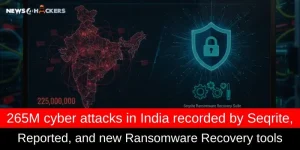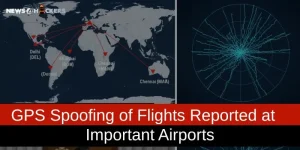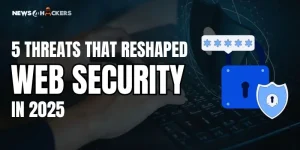The History of Cyber Security: A Detailed Guide [Updated 2023]
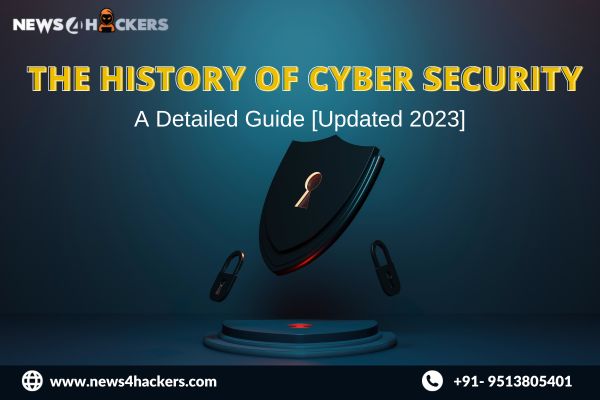
The History of Cyber Security: A Detailed Guide [Updated 2023]
Introduction:
The field of cybersecurity holds a prominent position within the realm of information technology. The term “cybersecurity” encompasses a range of tools, methods, strategies, and practices that are employed to safeguard the security of computing systems, information, and other related systems, as well as their users.
Various courses on Cyber Security are offered due to its widespread appeal and significant relevance. However, a topic that is often overlooked or given limited attention is the historical context and background of cyber security. In this discussion, we will delve into the History of Cyber Security extensively.
An Overview: History of Cyber Security
In contrast to prevailing assumptions, it is important to note that the discipline of cyber security is not a recent invention, but rather has a longer history. If one posits that the origins of cybersecurity can be attributed to the advent of computers gaining internet connectivity, such a notion would be erroneous. This is due to the fact that safeguarding data confined just within a computer, without any network involvement, also falls under the purview of cybersecurity.
The advent of the internet necessitated the installation of antivirus software in order to safeguard one’s computer against potential threats. While the awareness of damaging attacks in the past may have been less widespread compared to the present, the progression of information technology has correspondingly influenced the historical development of cyber security risks.
A comprehensive understanding of the significance of cybersecurity necessitates a thorough grasp of its historical context. This article aims to analyze the historical context around cybercrime and cybersecurity. In order to accomplish this, we will examine the historical context of cyber security concerns.
Beginning of Cyber Security
The advent of computer connectivity to the internet and the subsequent exchange of messages has resulted in significant transformations in the realm of cybercrime. Despite the current significantly elevated level of risk compared to the past, computer users have harbored understandable apprehensions over these vulnerabilities for an extended duration.
The landscape of cyber hazards may undergo transformations in response to advancements in technology. Cybercriminals perpetually engage in the creation of novel methodologies to gain unauthorized access to computer systems and pilfer valuable data.
A Look at Cybersecurity History Timeline
There is a prevailing belief among a significant portion of the population that the emergence of cybercrime is a relatively recent phenomenon, occurring only within the past few decades. However, the existence of security vulnerabilities in computer systems predates the current timeframe. The existence of cybercriminals has been observed for a considerable duration. This analysis aims to explore the historical trajectory of cybercrime, commencing from the 1940s.
- The 1940s: The Time Before Cybercrime
The execution of cyberattacks posed significant challenges for almost two decades following the development of the initial digital computer in 1943. Limited subsets of individuals were granted permission to utilize the vast electronic apparatuses, which lacked interconnectivity and were operated by a select few, rendering the potential risk virtually non-existent.

It is noteworthy to mention that computer pioneer John von Neumann initially proposed the concept of self-replicating computer programs in 1949, coinciding with the public disclosure of the theoretical foundation of computer viruses.
- The 1950s: The Phone Phreaks

The initial intent of hacking did not encompass computer information collection. It might be argued that the origins of computer hacking can be traced back to the early utilization of telephones. The prominence of phone phreaking emerged during the 1950s, hence elucidating this phenomenon.
The practice of phone phreaking gained popularity throughout the latter part of the 1950s. The term pertains to a range of methodologies employed by individuals known as “phreaks,” who possess a specific fascination with the inner workings of telephones, in order to manipulate the protocols enabling telecommunications professionals to remotely operate on the network, hence making cost-free calls and circumventing long-distance fees. Despite a gradual decline in the practice during the 1980s, telephone service providers were unable to effectively suppress the activities of individuals known as “phreaks.”
There have been speculations on the involvement of Apple’s co-founders, Steve Jobs and Steve Wozniak, in the mobile device fan community. The concepts that were employed in digital technology later found application in the development of Apple computers.
- The 1960s: All Quiet On the Western Front

By the mid-1960s, the majority of computers were characterized as large mainframe systems that were housed in controlled surroundings with regulated temperatures to ensure their safety. The limited availability of these cumbersome devices continued to impose restrictions on access, even for individuals with programming expertise, primarily due to their high cost.
The majority of the evolution of the term “hacking” took place throughout the span of this particular decade. The reason for the incident can be attributed to certain individuals who engaged in unauthorized access to the high-tech train sets owned by the MIT Tech Model Railroad Club, rather than being directly linked to computer usage. The individuals expressed a desire for modifications to their operational capabilities. During this decade, the concept was adapted to computer systems.
Nevertheless, the act of gaining unauthorized access to these early systems by hacking did not appear to be a lucrative enterprise. The primary objective of these initial hacking instances was only to acquire unauthorized access to computer systems. Nevertheless, the absence of prospects for political or economic advancement was evident. In its nascent stages, hacking predominantly revolved around the act of deliberately causing disruption in order to ascertain its feasibility.
Over the course of time, novel hacking techniques characterized by enhanced speed and efficacy have surfaced. The year 1967 marked a highly consequential event in the annals of information security. During that period, IBM extended an invitation to many students to visit their offices and examine a recently developed computer system. The pupils received instruction and guidance regarding the operation and utilization of the computer system. They gained access to multiple system components. Consequently, IBM acquired insights into the vulnerabilities of the system.
Consequently, the concept of incorporating defensive security measures on computer systems as a means to discourage unauthorized access by hackers gained traction. This occurrence could potentially be regarded as the inaugural occurrence of ethical hacking within the sector. In contemporary society, the discipline of ethical hacking has gained recognition as a reputable domain of study, which may be pursued through various educational avenues such as certified Ethical Hacker courses offered online and other similar learning opportunities.
Returning to the discourse, significant progress was made in the advancement of cybersecurity strategies with this development. During the latter half of the current decade, and notably in the subsequent years, there was a notable rise in the utilization of computers. Additionally, they were produced in reduced dimensions. As a result of their cost-effectiveness, enterprises began acquiring them for the purpose of data storage.
At the time, the notion of confining the computers within a designated space was impractical and unappealing. The employees need an excessive number of workers. During this period, passwords were extensively employed as a means to gain access to and safeguard computer systems.
- The 1970s: ARPANET and the Creeper
The inception and necessity of cybersecurity were observed throughout the 1970s. The decade in question played a significant role in the development and progression of the field of cyber security. The Advanced Research Projects Agency Network (ARPANET) constituted the earliest undertaking in this field. Prior to the advent of the internet, the construction of this network of connectivity took place.
I assume the role of the elusive individual; endeavor to apprehend me if you possess the capability. The printed material was produced with a software application created by Bob Thomas, a developer associated with ARPANET, through the utilization of personal computers that were interconnected within the network. This program autonomously transitioned from one machine to another for the first time. While the experiment posed no threat, it can be inferred that this event marked the inaugural instance of a computer worm documented within the realm of cyber security.
The first objective of the emerging field of cybersecurity is to effectively eliminate any illicit software application. Ray Tomlinson, a researcher involved in the development of ARPANET, devised a networked mail messaging system and then developed a program named Reaper. This program effectively utilized all available resources to detect and eradicate the Creeper worm.
- The 1980s: The Birth of Commercial Antivirus
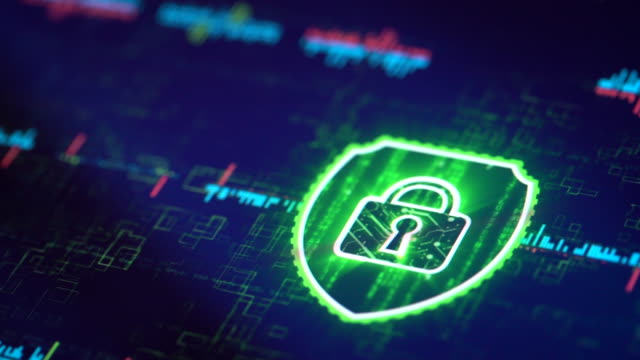
Cyber security solution close-up on digital display.
The occurrence of high-profile attacks witnessed a surge in regularity during the 1980s, exemplified by notable incidents at National CSS, AT&T, and Los Alamos National Laboratory. The 1983 film “War Games” depicts a scenario where a malevolent computer program assumes the guise of a game and assumes control over nuclear missile systems.
The names “Trojan Horse” and “computer virus” were introduced to the lexicon concurrently in the same year. During the duration of the Cold War, there was a notable escalation in the risk posed by cyber espionage. The current decade marks the significant emergence and proliferation of cybercrime within the annals of history.
The field of cybersecurity originated in 1987. While there are claims from multiple individuals regarding the creation of the initial antivirus program before that time, it was in 1987 that the commercial antivirus software era commenced with the introduction of Anti4us and Flushot Plus.
- The 1990s: The World Goes Online

The decade witnessed substantial expansion and development of the internet on a massive scale. Furthermore, the cybersecurity industry experienced significant growth. In the annals of computer security, the current decade has witnessed some noteworthy advancements:
- Concerns pertaining to polymorphic viruses have emerged. The first code that undergoes mutation as it propagates between computing systems while concurrently preserving the original algorithm was developed in the year 1990. The detection of the polymorphic virus was a significant challenge.
- The DiskKiller malware was reportedly disseminated via PC Today, a periodical catering to computer enthusiasts. A significant number of computers were infected. The DVD was disseminated among individuals who subscribed to the magazine. The individuals asserted their lack of awareness regarding the potential risk and attributed the incident to an unintentional occurrence.
- In order to circumvent the security restrictions imposed by antivirus software, fraudsters have devised novel methodologies. This period marked a significant juncture in the progression of cyber threats. Over the course of time, novel approaches for addressing the intensifying issues were devised. One of the technologies included in the aforementioned group was the Secure Sockets Layer (SSL). The development of this strategy was aimed at enhancing the security of individuals while utilizing the internet. The Secure Sockets Layer (SSL) protocol was first introduced in the year 1995. The utilization of this technology aids in enhancing the security of internet transactions, web surfing activities, and the protection of online data. The protocol was developed by Netscape. Subsequently, it would serve as the foundation for the contemporary HyperText Transfer Protocol Secure (HTTPS) that is presently employed.
- The 2000s: Threats Diversify and Multiply
The exponential expansion of the internet during this period was truly remarkable. A significant proportion of residential and commercial establishments currently possess computer systems. There existed a multitude of advantages, however, regrettably, malevolent actors in the digital realm also gained novel avenues for exploitation. At the onset of the current decade in the realm of computer security, a novel form of infection emerged, distinct from conventional methods reliant on file downloads.
Merely accessing a website contaminated with a computer virus proved to be sufficient. This particular form of clandestine infection presented a significant hazard. Furthermore, there were instances where instant messaging services had security breaches.
The incidence of credit card breaches experienced a notable rise during the 2000s. There have been significant instances of data breaches involving credit card information. There were further instances of cyber attacks targeting Yahoo during this period. In the years 2013 and 2014, the following discoveries were made. During a particular occurrence, unauthorized individuals successfully breached the security measures of Yahoo, thereby obtaining unauthorized access to the personal accounts of a staggering number of over three billion people.
The Biggest Moments in Cyber Security History for the Last 10 Years
2011: Sony’s PlayStation Network and Sony Pictures Suffers Multiple Attacks
In 2011, unauthorized individuals infiltrated Sony’s PlayStation network, compromising the privacy of several PlayStation users by illicitly acquiring their personal data. Consequently, the network had a prolonged period of inaccessibility spanning several weeks. The motivation behind this attack stemmed from the discontent arising from Sony’s decision to file a lawsuit against an American hacker who attempted to reverse-engineer the PlayStation 3 in order to facilitate the playing of unapproved third-party games by consumers.
The 2011 PlayStation Network outage, commonly referred to as the PSN Hack, was the result of an “external intrusion” that targeted Sony’s PlayStation Network and Qriocity services. This breach led to the compromise of personal data associated with approximately 77 million accounts and resulted in the unavailability of the service for users of PS 3 and PlayStation Portable consoles.
The PlayStation Network was compelled to cease operations on April 20, 2011, due to a cyber attack that occurred from April 17 to April 19 of the same year. Undoubtedly, this occurrence stands out as a significant milestone in the annals of cybercrime and related concerns.
At the time of the outage, the number of registered PSN accounts reached 77 million, making it not only one of the largest instances of data breaches but also the most prolonged period of PS Network unavailability in history. The aforementioned incident surpassed the TJX breach of 2007 in terms of its impact on customers, which affected a total of 45 million individuals. Government authorities from multiple nations raised concerns about the theft and the one-week delay by Sony in delivering a warning to its users.
2012: Global Payment Systems Data Breach
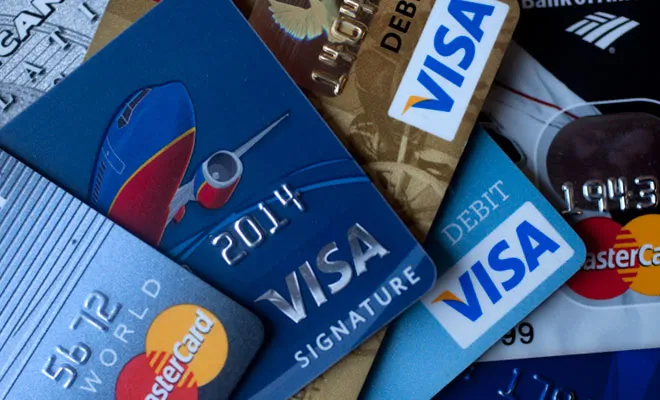
The occurrence of fraudulent activity was observed at the Union Savings Bank, located in Danbury, Connecticut, whereby around twelve debit cards that were issued in early March 2012 exhibited an unusual pattern. Additionally, it was observed that a significant number of the cards had been recently utilized at a café situated in a nearby private educational institution.
The scope of the Breach was confined to a restricted subset of individuals, and the cardholders were explicitly informed that they would not bear any liability for any instances of fraudulent card utilization. Visa was the initial entity to take action against Global Payments by revoking the latter’s status as an authorized service provider.
2013
- Cyber Attacks on the Singaporean Government: The 2013 Singapore cyberattacks were initiated by the hacktivist collective known as Anonymous. These attacks encompassed a range of offensive actions, partly motivated by the desire to retaliate against Singapore’s legislation pertaining to internet control. The attacks were purportedly claimed by an individual who identified themselves as “The Messiah,” operating under the pseudonym of an Anonymous member in the internet realm.
The initial cyberattacks on October 28, 2013, were directed on the website of the People’s Action Party Community Foundation. Subsequently, the Ang Mo Kio Town Council website became the next focal point of these attacks. Subsequently, the administrators of the website took the decision to close the site and proceeded to submit a case with the police.
- #OpIsrael Coordinate Yearly Cyber Attack: The Israeli government and private websites are subject to targeting by hacktivists during a yearly coordinated cyberattack known as OpIsrael (#OpIsrael). These hacktivists employ various means, including DDoS attacks, to carry out their actions. In 2013, on the eve of Holocaust Remembrance Day, a campaign was initiated by hackers affiliated with the group known as Anonymous. Subsequently, the campaign has been conducted on an annual basis.
- Adobe: In the 21st century, a total of 17 significant data breaches occurred, with one specifically targeting Adobe Inc., an American multinational computer software firm.
During the month of October in the year 2013, a group of unauthorized individuals successfully obtained access to login credentials and about 3 million payment card details belonging to users of Adobe. The aggregate number of users impacted amounted to 38 million.
- Snowden Leaks Classified NSA Documents: The National Security Agency (NSA) has encountered numerous instances of cyber-attacks. In the year 2013, Edward Joseph Snowden, a former consultant specializing in computer intelligence, disclosed a significant volume of secret information originating from the National Security Agency. During that period, he held a position as an employee and subcontractor at the National Security Agency (NSA).
The confidential records from the National Security Agency (NSA) were transmitted to The Guardian, thus leading to their publication. This event marked a significant milestone in the progression of cybersecurity and cybercrimes.
2013 and 2014: Target and Home Depot Credit Card Data Stolen
Between April and September 2014, a significant data breach occurred at Home Depot, resulting in the compromise of credit card information belonging to around 56 million consumers. This incident stands as one of the most notable breaches in the history of cyber security, attributable to the utilization of meticulously designed malware.
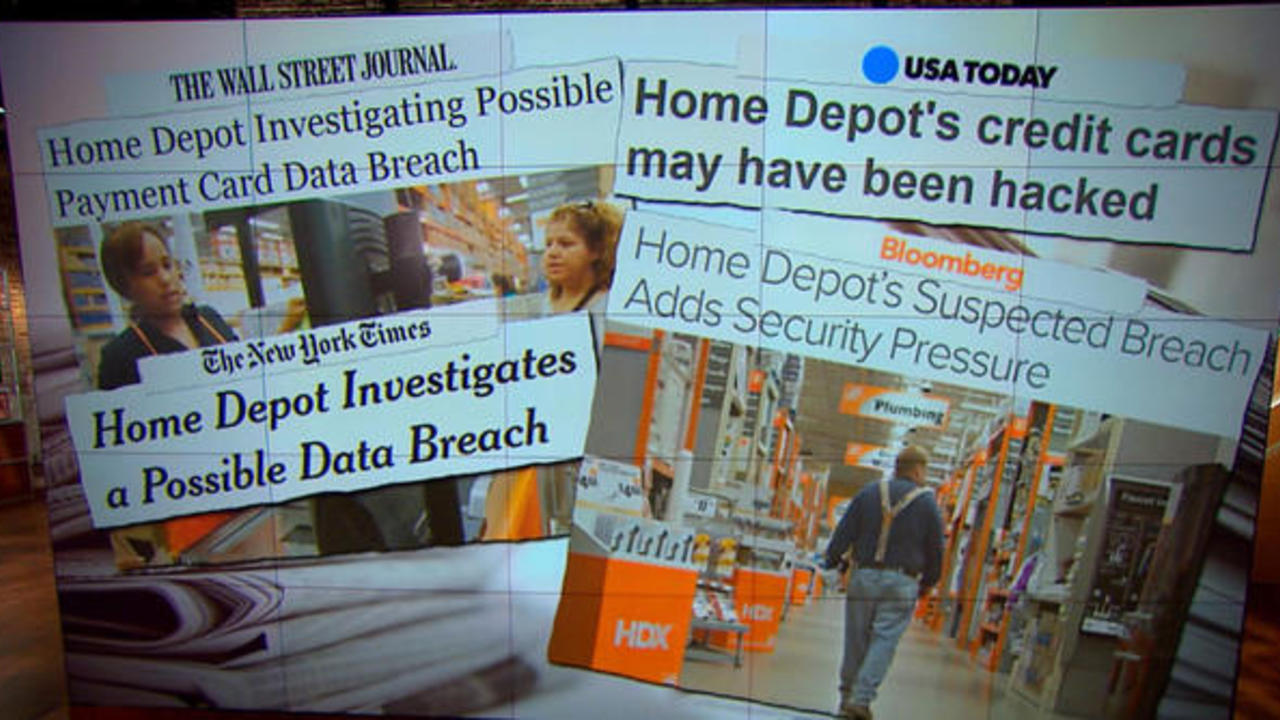
In order to compromise the self-checkout machines at Home Depot locations in the United States and Canada, cybercriminals were required to infiltrate the retailer’s network by exploiting credentials that had been illicitly obtained from a vendor not directly affiliated with Home Depot. Consequently, sensitive credit card data was compromised.
The occurrence of the breach took place during a period characterized by the recurrent targeting of government and commercial entities by hackers. In the year 2014, the number of data breaches worldwide exceeded 1,500, representing an increase of around 50% compared to the previous year, 2013.
The theft incident at Home Depot can be likened to a security breach that occurred at a competing company, Target, in 2013. This breach led to the unauthorized disclosure of personal information belonging to an additional 70 million consumers, along with the credit card details of 40 million Target customers.
2013 and 2014: Yahoo! Suffers a Massive Data Breach
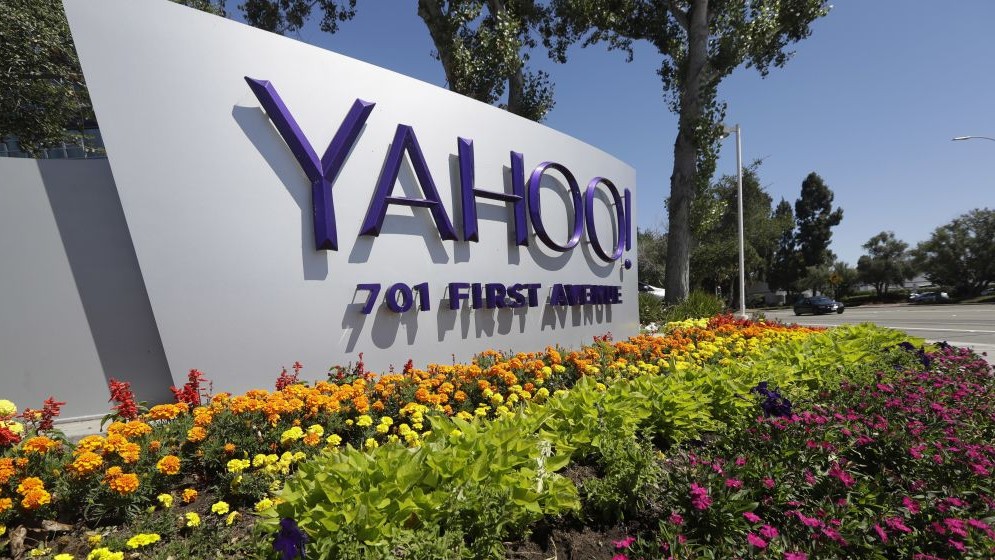
In 2014, hackers directly targeted Yahoo’s user database, resulting in the compromise of personal information for around 500 million individuals. Based on available reports, the individuals involved in fraudulent activities managed to acquire sensitive account details, including personal information such as names, email addresses, passwords, phone numbers, and dates of birth.
The severity of the Yahoo data breach was exacerbated by the presence of security mechanisms that were deemed ineffective. Through the utilization of a phishing technique, cybercriminals successfully penetrated the network infrastructure of Yahoo. It is plausible that an unauthorized individual gained entry into the system by the inadvertent activation of a malicious hyperlink by a single individual possessing network access privileges.
2014: Sony Dealt Another Blow with Attack on Sony Pictures Entertainment
On November 24, 2014, a cybercriminal collective disclosed classified information obtained from Sony Pictures Entertainment (SPE). The hacker collective self-identified as the Guardians of Peace. The data breach encompassed a range of sensitive information, including executive remuneration at SPE, personnel profiles, correspondences via email, strategic blueprints for forthcoming Sony productions, as well as scripts pertaining to specific films.
The hacker collective additionally employed a modified version of the Shamoon wiper, a malicious software, in order to eradicate Sony’s computer infrastructure. The attribution of the cyber attack to the North Korean government was determined by the US Intelligence through an assessment of the network sources, software, and tactics employed in the incident.
2015
- Experian Data Breach Compromises 15 Million Records: The occurrence of this data breach can be attributed to a human error that occurred during the verification process aimed at establishing the identification of customers. The Experian data was transferred to a cybercriminal who assumed the identity of one of Experian’s clients.
- Snapchat Users’ Personal Information Leaked: According to reports, an unidentified hacker or entity allegedly made public the usernames and phone numbers of around 4.6 million Snapchat users without charge.
According to Kevin Poulsen of Wired Magazine, the Snapchat database in question does not encompass the entirety of the platform’s data. A minuscule fraction of Snapchat users experience any form of influence. Despite its magnitude, the number was substantial.
Hackers have disclosed all but the last two digits of phone numbers associated with Snapchat accounts on a website called snapchatDB. Individuals who expressed an interest in obtaining access to the complete set of integers were encouraged to visit the website in order to request access to the unfiltered database.
- Office of Personnel Management (OPM) Suffers Significant Data Breach: The Office of Personnel Management (OPM) made an announcement regarding its status as a target of a data breach specifically aimed at compromising personnel records in June 2015. Approximately 22 million records were impacted.
- Ashley Madison Hackers Publish Users’ Email Addresses: This particular cyber intrusion garnered significant global attention and had a profound impact. The Ashley Madison case holds significant prominence within the realm of cybercrime research, serving as a noteworthy incident that sheds light on the historical trajectory of this field and its associated concerns.
In July 2015, an incident occurred wherein a hacking collective, known as The Impact Team, illicitly acquired over 60 terabytes of corporate data, encompassing user information.
- 2015 to 2016: WikiLeaks and the Democratic National Committee: The DNC computer network experienced a data breach as a result of infiltration by two distinct Russian hacker groups, namely Cozy Bear and Fancy Bear, who were operating under the auspices of Russian intelligence agencies.
The case garnered significant public attention because of allegations suggesting that Russia engaged in actions to bolster Donald Trump’s campaign during the 2016 United States presidential election. This subject matter is commonly addressed within the concise chronicle of cybercrime’s intersection with politics.
2016: General Data Protection Regulation (GDPR) Adopted by the EU
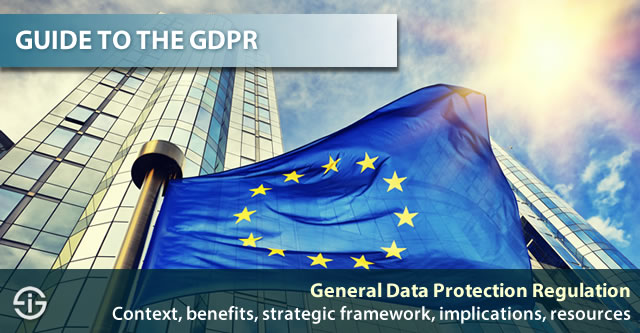
The General Data Protection Regulation (GDPR) is a legislative framework that sets down guidelines and regulations pertaining to the collection and utilization of personal data obtained from individuals residing beyond the borders of the European Union (EU). This technology empowers individuals to exert greater agency and authority over their personal data. Moreover, this initiative facilitates the revision and alignment of legislation, allowing companies to reduce administrative burdens and enhance consumer trust.
One of the notable achievements of the European Union in recent times was the implementation of the General Data Protection Regulation (GDPR) legislation in 2016. The aforementioned legislation serves as a substitute for the Data Protection Directive of 1995, which was enacted during the nascent stages of internet development.
2017
- Equifax Breach Results in Compromised Data for Nearly 150 Million: In September 2017, Equifax, an American credit reporting organization, experienced a data breach resulting in the unauthorized disclosure of personal information belonging to around 147 million individuals.
- Shadow Brokers Leaks NSA Hacking Tools: In 2017, a cybersecurity breach occurred involving the National Security Agency (NSA), wherein a hacker organization known as TSB or The Shadow Brokers released a collection of hacking tools utilized by the agency.
- The World’s First Ransomware: WannaCry: The WannaCry ransomware outbreak is widely recognized as one of the most notorious incidents in the realm of cybercrime. The incident occurred in May 2017 and was attributed to the WannaCry ransomware cryptoworm. The cyber assault was specifically aimed at computer systems operating on the Windows platform on a global scale.
- NotPetya: The 2017 Ukraine ransomware attacks, commonly referred to as Petya and NotPetya, encompass a series of encrypting malware incidents. The NotPetya malware was employed in June 2017 to execute a widespread cyberattack, with a particular focus on Ukraine.
- Bad Rabbit Masquerades as an Adobe Flash Update: This incident is a significant cyberattack, serving as a valuable case study for students with an interest in the field of computer security. Bad Rabbit is a form of malicious software known as ransomware, which has the capability to propagate itself through drive-by attacks. In the year 2017, there was an occurrence of a deceptive update for Adobe Flash that induced consumers to mistakenly initiate its download. The request demanded a payment of $280 in Bitcoin within a specified time frame of 40 hours.
- Uber Suffers Breach Impacting 57 Million Customer Data Points: In the year 2016, a breach occurred wherein hackers illicitly obtained data from a total of 57 million Uber accounts, encompassing individuals who served as both drivers and passengers inside the platform. The organization maintained confidentiality for a period beyond one year. At the time of the occurrence, Uber was engaged in discussions with American regulatory authorities on many charges pertaining to privacy violations.
Uber asserts that it had a legal obligation to inform both the relevant authorities and the drivers whose license numbers were compromised regarding the incident. In an effort to conceal the occurrence and eliminate the information, the firm enlisted the services of individuals skilled in computer hacking. Uber, in its statement, declined to disclose the names of the assailants and asserted its belief that the accessed information remained unused.
2018
- Facebook Plagued by Privacy Concerns: In a security update released in September 2018, Facebook asserted that a breach had occurred, leading to the unauthorized disclosure of personal information belonging to around 50 million users. The disclosure of the theft of “access tokens,” which are utilized by hackers to gain unauthorized access to the accounts of around 30 million persons, was eventually made known to the public.
- 92 million MyHeritage Users’ Account Details Compromised: In 2018, an undisclosed group of hackers gained unauthorized access to the personal information of around 92 million individuals who were registered members of the online platform MyHeritage, which specializes in genetic genealogy and family tree services. The hackers managed to encrypt the passwords of these users and also obtained their email addresses. There is no evidence of the collection of either credit card information or genetic information, which is very concerning.
MyHeritage has declared its collaboration with an autonomous cybersecurity firm to undertake an investigation into the intrusion and provide recommendations for fortifying security measures against any breakdowns in the future. The company has declared its intention to expedite its endeavors in implementing two-factor authentication for its users. MyHeritage recommended that all users modify their passwords during the interim period.
- Marriott Cyber Attack Goes Unnoticed for Years: In the latter part of 2018, Marriott made a public declaration on the compromising of one of their reservation systems. The occurrence of the data breach remained unnoticed for a duration of four years, commencing in the year 2014, and had an adverse effect on a total of 500 million individuals who were guests at various hotels.
- Hundreds of Thousands of Records Breached in British Airways Cyber Attack: In the present scenario, it is postulated that the perpetrator managed to gain unauthorized access to the personal information of more than 429,000 accounts, encompassing both clientele and staff members.
- California Consumer Privacy Act (CCPA) Signed Into Law: Due to the ongoing progression of cyber dangers, cyberattacks have exhibited an increased level of intricacy and refinement. In order to address this issue, the California Consumer Privacy Act (CCPA) was enacted on June 28th, 2018, and subsequently implemented on January 1st, 2020. The subject matter encompasses a variety of rights pertaining to consumer privacy, as well as the corresponding responsibilities that businesses have in relation to the gathering and commercialization of personal data.
2019: Breaches in Singapore’s Health Sectors
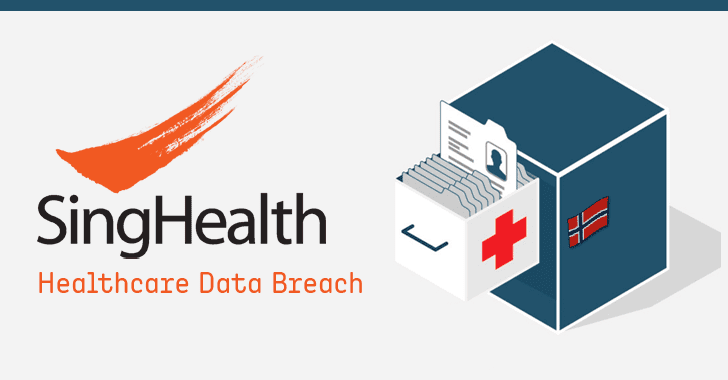
Singapore has had a significant number of cyberattacks, rendering it among the countries most affected by such incidents globally. The healthcare sector exhibits a particularly high susceptibility to cybercriminal activities. In the year 2019, a total of 35 occurrences of third-party data breaches were recorded. The numerical value experienced an upward trend, reaching a total of 89 units in the year 2020.
2020
The year under consideration posed significant challenges for professionals in the field of cybersecurity, primarily due to the emergence of the COVID-19 pandemic on a global scale. Despite the prevailing disorder, cybercriminals persisted in engaging in their unlawful pursuits. The following list comprises some significant data breaches that occurred in the year 2020:
- In January, an inadvertent online exposure occurred involving an internal customer support database at Microsoft.
- In February, a significant data breach occurred, resulting in the unauthorized disclosure of personal information pertaining to over 10.5 million visitors who had stayed at MGM Resorts Hotels. The compromised data was then made available on a hacking forum.
- In April, a significant quantity of over 267 million Facebook profiles became available for purchase on the dark web.
- In the month of April, it was observed that a significant number exceeding 500,000 Zoom accounts were made available for purchase on the dark web.
- In April, Cognizant Technology Solutions experienced a ransomware attack perpetrated by the Maze gang.
- The unauthorized access and compromise of high-profile individuals’ Twitter accounts in the month of July.
2021
The year 2021 had a persistent occurrence of several cyberattacks. A total of ten highly notable examples were:
- Microsoft Exchange Attack from January to March.
- Accellion Supply Chain Attack in January.
- Florida Water Supply in February.
- Australia Channel 9 News Ransomware Attack in March.
- CNA Financial Ransomware in March.
- Quanta Ransomware Attack in April.
- Brenntag Ransomware Attack in April.
- Colonial Pipeline Ransomware Attack in May.
- JBS Foods Ransomware Attack in May.
- Kaseya VSA Ransomware Attack in July.
Cybersecurity in the Future – Beyond 2023
There exists a wide range of cyber threats. Instances of phishing, online data loss, and ransomware attacks frequently occur on a global scale. The imperative to mitigate security vulnerabilities has become increasingly paramount in contemporary times.
The cybersecurity industry is seeing rapid growth and expansion. Based on the findings of Statista, it is projected that the global cybersecurity industry will witness substantial growth, reaching a value of $345.4 billion by the year 2026. Ransomware poses a significant and pervasive threat to the security of organizational data, and its prevalence is anticipated to increase in the foreseeable future.
The utilization of machine learning and artificial intelligence in the field of cybersecurity is poised for an increase in adoption. In contemporary company operations, the imperative to mitigate cyberattacks holds significant importance. Hence, contemporary technology is necessary to do these tasks in a manner that is both significant and effective.
These represent only a limited selection of the available choices. It may be important to develop multiple innovative methods for automating the procedure. This is the reason why the business assigns significant importance to the development of new skills. The cybersecurity industry continues to experience growth and prosperity. The utilization of contemporary technology mitigates potential risks and dangers. It is imperative to maintain a proactive stance in order to anticipate and mitigate any dangers. In order to accomplish this, it often necessitates the involvement of highly proficient professionals inside the industry.
The Bottom Line
To wrap up, we would say that this blog post provides a concise overview of the historical development of cyber security, spanning from the 1940s to the present day. It is evident that cyberattacks and cybersecurity measures have progressively advanced over time.
The escalating frequency and severity of cyberattacks have led to a growing demand for skilled professionals in the field of cybersecurity. One can acquire expertise in the field of cybersecurity by utilizing News4Hackers’s educational offerings such as courses, literature, tutorials, and similar resources through its sister vertical Craw Security, the Best Cybersecurity Training Institute in India.
Furthermore, it is evident that the precise origins of cybersecurity remain obscure. Cybersecurity can be regarded as a discipline that has existed since the inception of computers.
About The Author:
Yogesh Naager is a content marketer who specializes in the cybersecurity and B2B space. Besides writing for the News4Hackers blog, he’s also written for brands including CollegeDunia, Utsav Fashion, and NASSCOM. Naager entered the field of content in an unusual way. He began his career as an insurance sales executive, where he developed an interest in simplifying difficult concepts. He also combines this interest with a love of narrative, which makes him a good writer in the cybersecurity field. In the bottom line, he frequently writes for Craw Security.
Read More Blogs Here :


